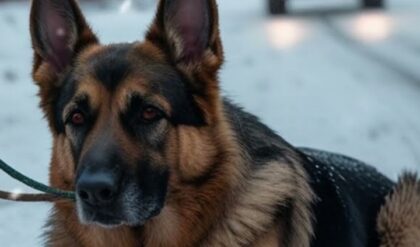
 De Havilland DH98 Mosquito T.MkIII (RR299 / G-ASKH)
De Havilland DH98 Mosquito T.MkIII (RR299 / G-ASKH)
The hugely versatile and high performance de Havilland DH98 Mosquito was unquestionably the greatest contribution made by the de Havilland Aircraft Company to the success of the RAF in the Second World War.
Its innovative design made use of a wooden ‘sandwich’ construction, drawing upon the experience gained from the company’s pre-war high-speed DH88 Comet Racer, and the streamlined DH91 Albatross airliner. Such was its popularity with pilots that it soon became affectionately known as ‘The Wooden Wonder’. Originally conceived as a high-flying, unarmed photo-reconnaissance aircraft, the Mosquito saw service in wide-ranging roles from bomber / fighter-bomber, night-fighter, anti-shipping strike, trainer, torpedo bomber and even as a target tug.
By 1938, the Air Ministry had started looking for a heavily-armed, multi-role aircraft to which Geoffrey de Havilland responded by saying ‘we believe that we could produce a twin-engine bomber which would have a performance so outstanding that little defensive equipment would be needed’.
Nevertheless, at a meeting in October that year, the Ministry showed very little interest and ordered the de Havilland Company build wings for other bombers as a subcontractor.
From 4th September 1939 Britain was at war with Germany and British aircraft production was concentrated on fighters such as the Vickers Supermarine Spitfire and the Hawker Hurricane. New facilities were being created to meet the demand for these as well as heavy bombers like the Vickers Wellington and Armstrong-Whitworth Whitley – as wartime aircraft production was extremely focussed.
As the conflict progressed, raw materials were in short supply and so the use of alternative non-strategic construction resources became increasingly important. Additionally, greater significance was also placed on the requirement for new aircraft designs to have a multi-role capability.
Despite initial designs receiving an unfavourable reception, de Havilland persevered. Eventually and after a number of further impressive submissions, the Air Ministry warmed to the concept of the Mosquito and a draft requirement was raised for a high-speed, light reconnaissance bomber capable of over 400 mph.
To maintain secrecy, the project was designed 6½ miles south of Hatfield at Salisbury Hall (former home of the infamous Nell Gwynne, mistress to King Charles II). Additional connections to Winston Churchill and his family made this an ideal yet ironic hidden location for the Mosquito design team of one of Britain’s favourite aircraft.
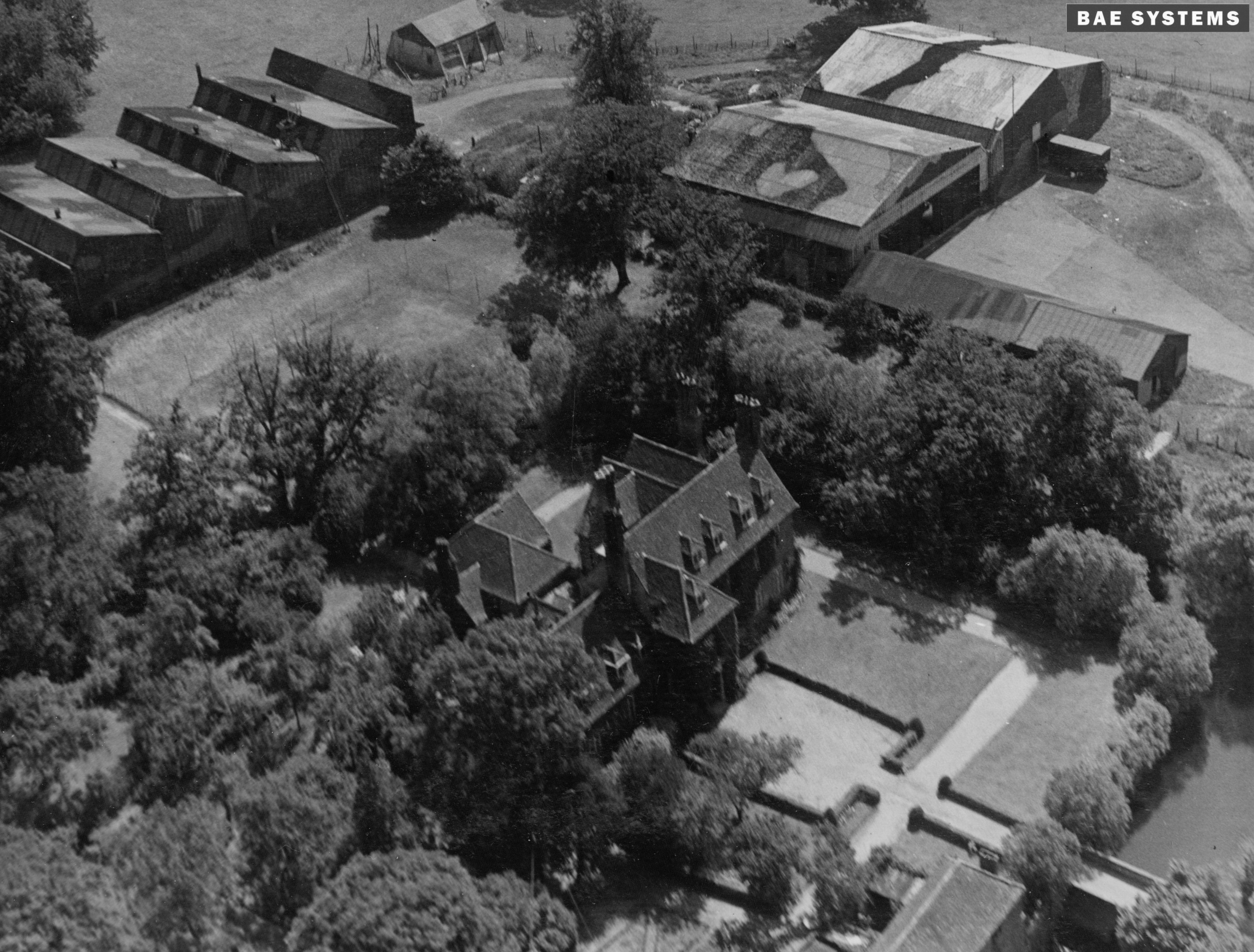
Without any government funding, the project was financed as a ‘private venture’, only finally receiving official backing with the eventual release on 1st March 1940 of Specification B.1/40, which called for 50 bomber / reconnaissance variants. This was supplemented in May 1940 by Specification F.21/40, calling for a fully-armed, long range fighter. As a result, de Havilland was authorised to build a fighter version of the Mosquito.
Construction of the three prototypes began in March 1940, although work was cancelled soon after due to losses suffered at Dunkirk. Thankfully, the instruction issued by Lord Beaverbrook, Minister of Aircraft Production, was ‘not very specific’ and rather conveniently was largely ignored by Air Vice-Marshal Freeman (Vice-Chief of the Air Staff) who did not pass it on.
Despite this, development was very slow with the Design Team, led by Ron Bishop, experiencing severe shortages of basic materials to build prototypes.
The first prototype DH98 Mosquito (W4050 – E0234) first flew at Hatfield on 25th November 1940, with Geoffrey R de Havilland (Geoffrey Junior) at the controls, accompanied by John E. Walker, the chief engine installation designer. Painted in ‘prototype yellow’, take-off was reported as ‘straightforward and easy’ and the flight was relatively problem free, despite the undercarriage doors remaining slightly open.
Over the next test flights, various handling and performance issues were ironed out and during trials on 16th January 1941, the prototype outpaced a Vickers Supermarine Spitfire. The aircraft (W4050) has been preserved since 1959 at the de Havilland Aircraft Museum at Salisbury Hall, alongside the M25 motorway.
A second DH98 Mosquito prototype (W4051) first flew as a photo-reconnaissance variant on 10th June 1941
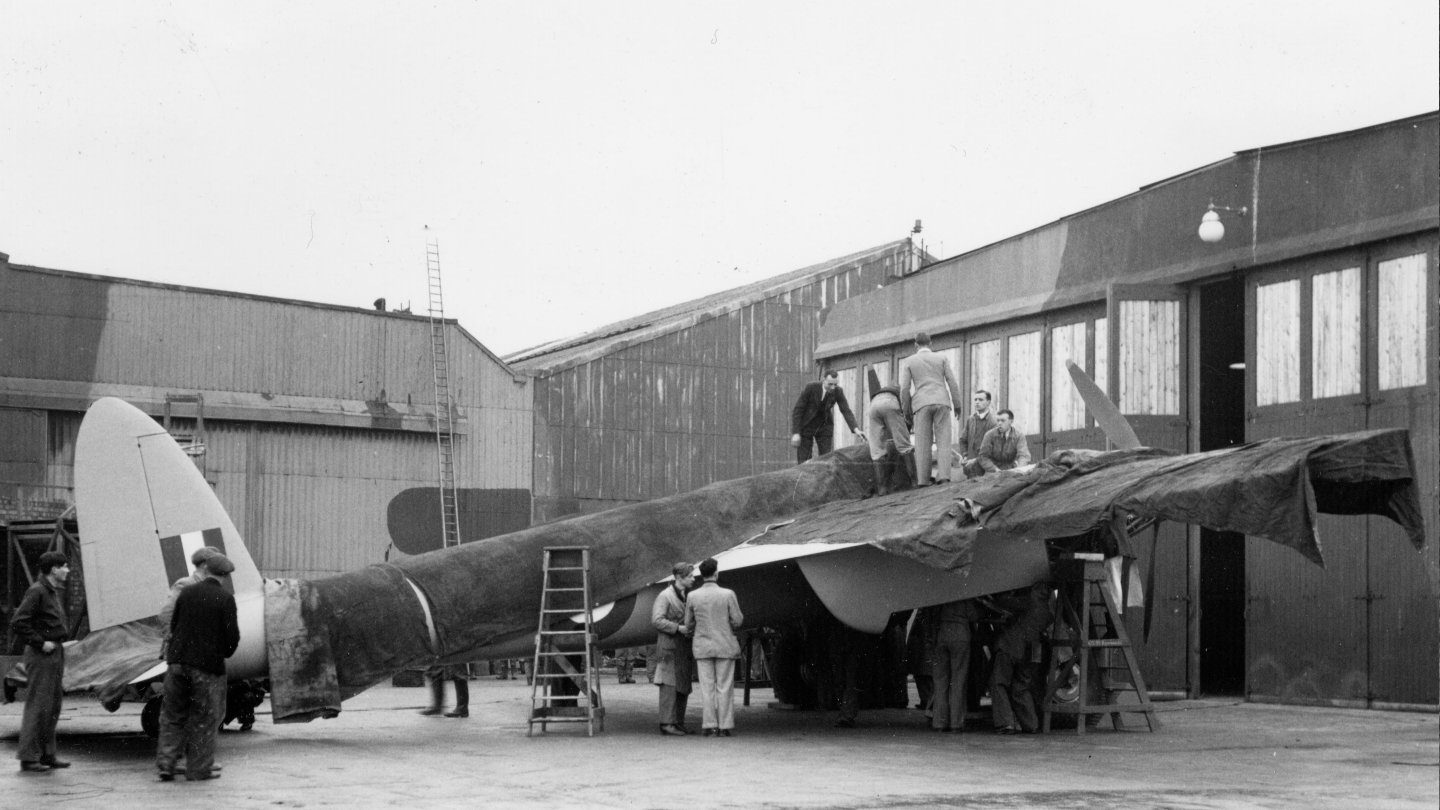
A third prototype (W4052) was used for the development of the fighter variant with cannon and machine gun armament. It would also carry Airborne Interception (AI) equipment to enhance both its night and day fighter capabilities.
On entry into service, the ‘Mossie’ was an immediate success and became well-known for its bombing, pathfinder and precision, low-level strike capabilities. Wartime development resulted in a wide range of variants and a significant increase in bomb load capability and range after the incorporation of a larger bomb bay and auxiliary fuel tanks.
The major production was carried out in Britain by de Havilland Aircraft Company, Airspeed, the Standard Motor Company and Percival Aircraft Ltd with others being built overseas by de Havilland Canada and de Havilland Australia.
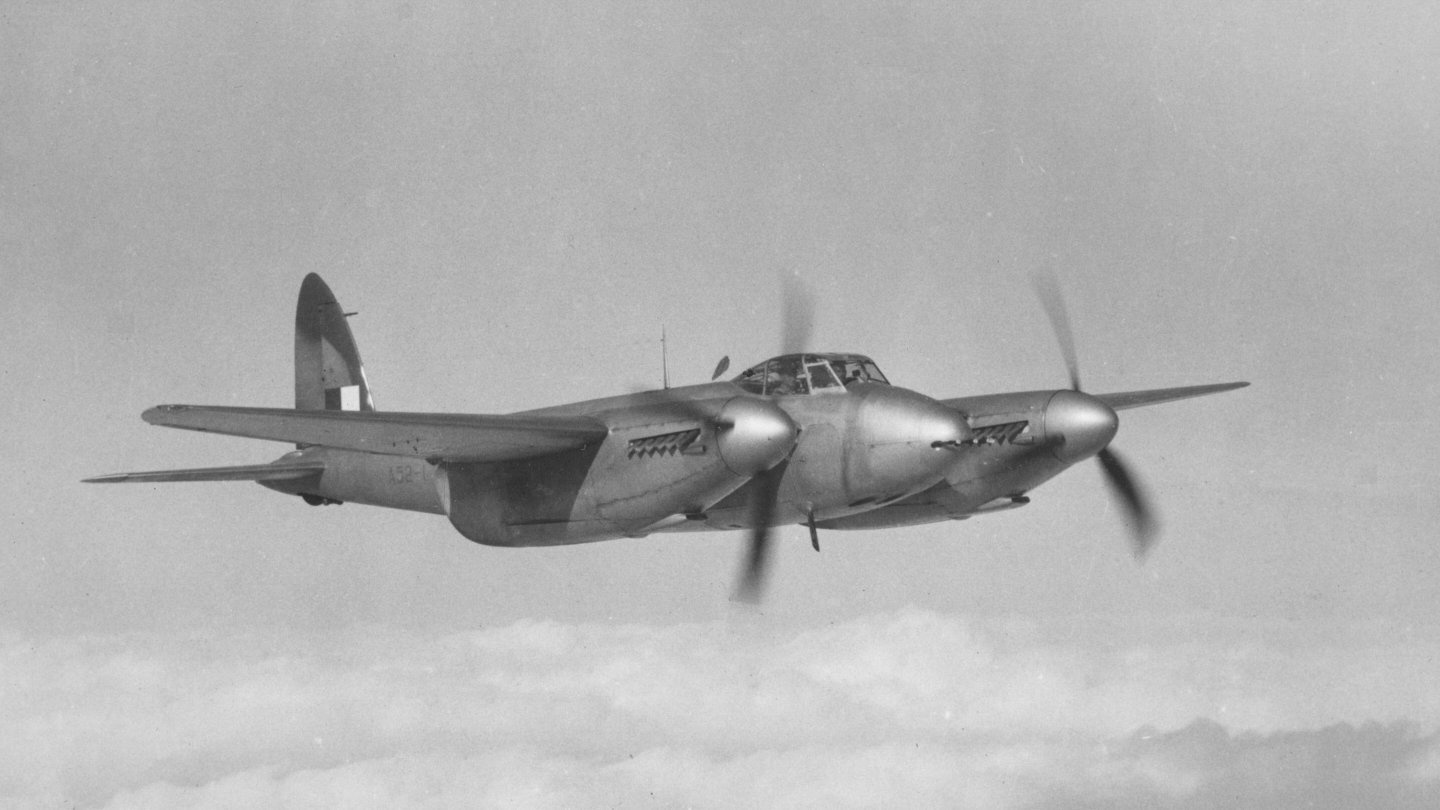
Numerous subcontractors were engaged in component manufacture, particularly the wooden furniture companies of High Wycombe (which by coincidence was Geoffrey de Havilland’s birthplace) as well as automotive coachbuilders such as the Standard Motor Company Ltd.
The Mosquito saw glory on a number of operations, the most famous being Operation Jericho on 18th February 1944. Nine Mosquito FB.VI bombers, operating out of RAF Hunsdon in Hertfordshire, attacked the German-held prison at Amiens on the edge of the Somme Valley. Their skillful airmanship delivered low-level waves of bombs, first destroying the outer and inner prison walls, quickly followed by the guard house. A total of 255 allied prisoners escaped through the breaches in the buildings and walls although sadly 182 were soon recaptured.
On another occasion, a daylight Mosquito attack knocked out the main Berlin Broadcasting Station on the very day Herman Göring (German Commander-in-Chief) was giving a speech to celebrate the 10th anniversary of the Nazis’ seizing power. Göring often chastised German aircraft manufacturers after the attack and is once said to have commented,
‘In 1940 I could at least fly as far as Glasgow in most of my aircraft, but not now! It makes me furious when I see the Mosquito. I turn green and yellow with envy. The British, who can afford aluminium better than we can, knock together a beautiful wooden aircraft that every piano factory over there is building, and they give it a speed which they have now increased yet again’.
‘What do you make of that? There is nothing the British do not have. They have the geniuses and we have the nincompoops. After the war is over I’m going to buy a British radio set – then at least I’ll own something that has always worked!’.
Mosquitos flew their last wartime mission in the European theatre on 21st May 1945 when aircraft of 143, 235 & 248 Squadrons of RAF Costal Command joined the hunt for German submarines that may have been tempted to disobey the surrender order.
Navalised Sea Mosquitos soon appeared on aircraft carriers after Eric ‘Winkle’ Brown landed a modified Mosquito FB.VI (designated Sea Mosquito TR.33) on HMS Indefatigable on 25th March 1944 and 50 of these torpedo-bombers were built at Leavesden.
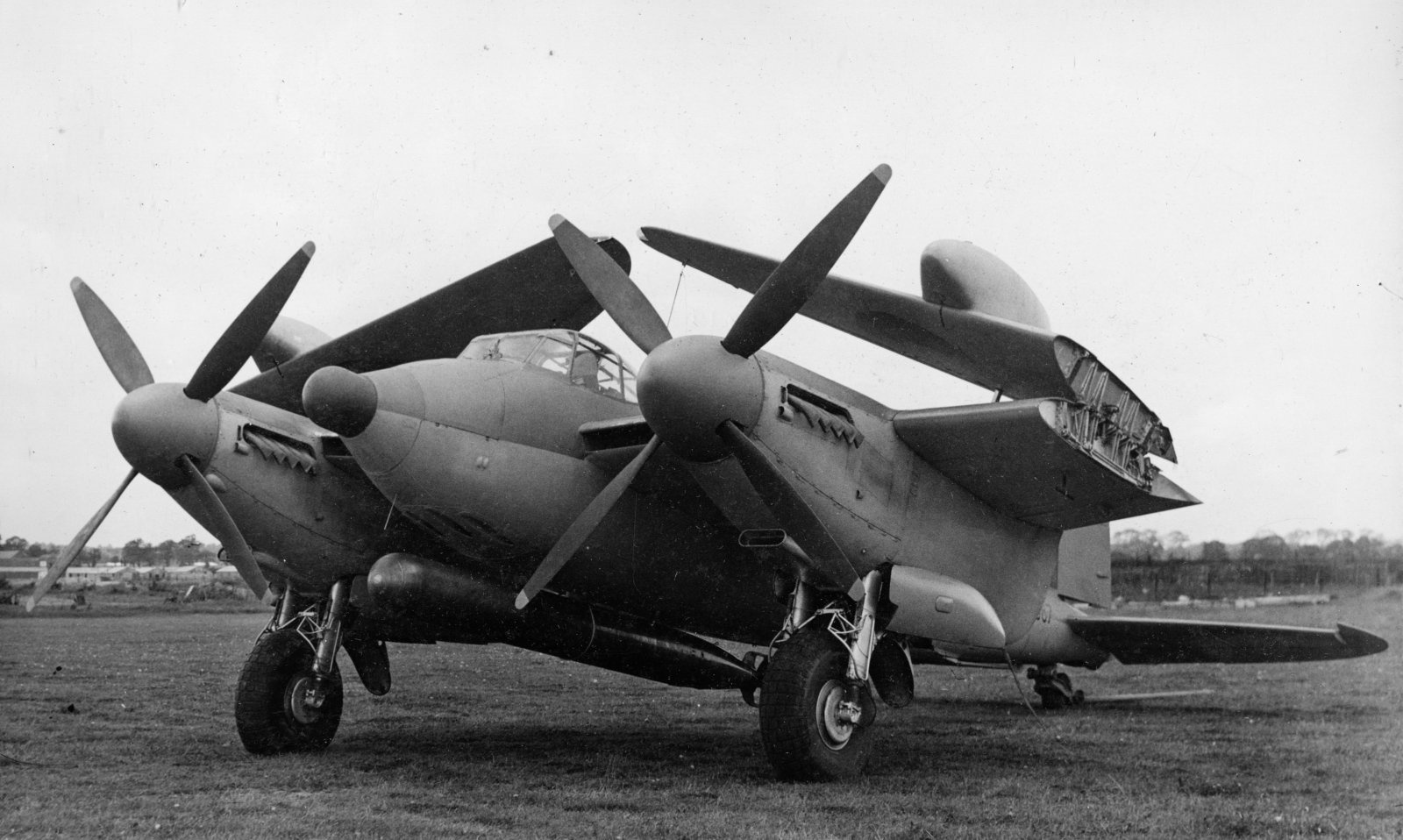
Ten Mosquitoes were also used by British national airline BOAC as high-speed, unarmed wartime transports for VIPs, operating flights to and from Sweden. Lastly, during their final days, a number of Mosquito TT.35 target towing Tugs flew with the RAF, some FB.VIs and T.IIIs being converted for this role by the Belgian Air Force.
The last operational flight by a Mosquito was in May 1963, when No.3 Civilian Anti-Aircraft Co-operation Unit retired its TT.35s.
The total number of DH98 Mosquito aircraft built was 7,781. The type serving with the main Allied air forces, including both the United States and Russia and postwar many were operated by the airforces of France, Belgium, Turkey, Sweden, Dominica, South Africa, Yugoslavia, Australia, Canada, China, Czechoslovakia, Israel, New Zealand and Norway.
Variants and Number built
DH98 Mosquito PR.I
10 Built
1,300 hp Merlin 21, max weight 18,050 lb, unarmed, four cameras. Short engine nacelles.
DH98 Mosquito F.II / NF.II
589 built / 199 converted
199 subsequently converted to NF.XII and XVII, Merlin 21 or 23, four machine guns plus four cannon. Maximum speed 370 mph, maximum weight 18,547 lb. Some PR conversions.
DH98 Mosquito T.III
364 built
Unarmed trainer with dual controls. Merlin 21 or 23/25.
DH98 Mosquito B.IV
283 built
Night bomber using Merlin 21 or 23. Bulged bomb bay fitted to some to allow carriage of 4,000 lb bomb internally. Max speed 380 mph, max weight 21,462 lb. Twenty seven built as B.IV modified for PR role
DH98 Mosquito B.V
One built (Prototype)
Two 1,000 lb bombs internally and two underwing 500 lb bombs.
DH98 Mosquito FB.VI
2,305 built.
Fighter bomber / intruder variant using Merlin 22, 23 or 25. 4 machine guns and four cannons, plus two x 250 lb bombs carried internally & underwing carriage of up to two x 500 lb bombs. Could be fitted with underwing rocket projectiles or drop tanks instead of external bomb carriage.
DH98 Mosquito B.VII
25 built.
Canadian production based on B.V. Merlin 31 (Packard built).
DH98 Mosquito PR.VIII
Two-stage supercharged Merlin 61s for high altitude operation. Otherwise as PR.IV from which five aircraft were converted to this mark.
DH98 Mosquito PR.IX
90 built
1,680 hp Merlin 72 (some with Merlin 76/77)
DH98 Mosquito B.IX
54 built
1,680 hp Merlin 72 engines – otherwise as B.IV. 54 built. Could carry 2,000 lb internally, plus one 500 lb bomb or a drop tank under each wing. Some modified with bulged bomb bay doors for 4,000 lb bomb.
DH98 Mosquito NF.XII
99 conversions
Night fighter with airborne intercept radar. No machine guns fitted. Converted from F.II, mainly at Marshalls, Cambridge.
DH98 Mosquito NF.XIII
As NF XII, but based on B.VI with AI Mk VIII radar. Merlin 21 or 23 and ability to carry drop tanks.
DH98 Mosquito NF.XV
High altitude fighter with cockpit pressurisation and increased wing span. Five converted from B.IV. Airborne intercept radar. Four Browning machine guns in under-fuselage pack.
DH98 Mosquito PR.XVI/B.XVI
833 built
Similar to respective Mk IX models, with pressurised cockpit. 433 PR.XVI, 400 B.XVI (powered either by Merlin72/73 or 76/77). Most B.XVI with bulged bomb bay door for 4,000 lb bomb. Max weight (B.XVI) 25,200 lb.
DH98 Mosquito NF.XVII
99 conversions
As NF.XIII, but fitted with US radar (UK designation AI Mk X). One prototype plus F.II conversions by Marshall of Cambridge.
DH98 Mosquito FB.XVIII
27 conversions
Basically an FB.VI, with a 57mm cannon in fuselage instead of the four 20 mm cannon. Intended for anti-ship and anti-submarine strike. Four machine guns retained and provision for the external carriage of rocket projectiles or bombs.
DH98 Mosquito NF.XIX
280 built
Similar to NF.XVII, but based on NF.XIII with Merlin 25 engines.
DH98 Mosquito B.XX
245 built
Built by de Havilland Canada with 1,460 hp Packard Merlin 31 or 33. Specification otherwise as B.VII.
DH98 Mosquito FB.21
Three built
Canadian-built FB.VI, with Packard Merlin 31 or 33.
DH98 Mosquito T.22
Six built
Canadian equivalent of T.III with Packard Merlin 33.
DH98 Mosquito FB.24
One built
FB.21 with Packard Merlin 301
DH98 Mosquito B.25
400 built
Canadian-built B.20 with 1,620 hp Packard Merlin 225.
DH98 Mosquito FB.26
337 built
As FB.21 with increased power Packard Merlin 225 engines.
DH98 Mosquito T.27
49 built.
As T.22 with Merlin 225.
DH98 Mosquito T.29
39 Conversions
Dual control conversions from FB.26.
DH98 Mosquito NF.30
530 built
Similar to NF.XIX. Powered by Merlin 72 (1680 hp), or Merlin 76 (1,710 hp), or Merlin 113 (1,690 hp). Max weight 21,105 lb. Max speed 424 mph at 26,500 ft.
DH Mosquito PR.32
Five built
High altitude, long span and lightweight version of PR.XVI.
DH98 Mosquito PR.34
231 built
PR version with increased fuel tankage for long range operations. Additional fuselage fuel and 200 gallon drop tanks – total capacity 1,269 Imp gallons. Merlin 113/114 engines and 25,500 maximum weight. Cruising range in excess of 3,500 miles.
DH98 Mosquito B.35
276 built &140+ conversions
Bomber variant with Merlin 113/114. Also used as a target tug by Civilian Anti Aircraft Cooperation Units (TT.35). Conversions by Brooklands Aviation Ltd. Also PR.35 version for night flash photography.
DH98 Mosquito NF.36
163 built
Night fighter version with Merlin 113 and AI Mk IX radar.
DH98 Mosquito NF.38
101 built
Similar to NF.36 with AI Mk IX radar and Merlin 113/114 engines. Main operator was the Yugoslavian Air Force
DH98 Mosquito TT.39
31 conversions
Target tug conversion from B. Mk XVI. Rear compartment for target operator and ungainly glazed nose. Conversions by General Aircraft Ltd. Operated by the Royal Navy.
DH98 Mosquito FB.40 / PR.40
212 built
Australian-built. Generally as FB.VI, with Packard-built Merlin 31 or 33. Six aircraft modified for PR use as PR.40.
DH98 Mosquito PR.41
28 conversions
FB.40 converted to PR role using Merlin 69 engines
DH98 Mosquito FB.42
One conversion
FB.40 with Merlin 69 engines.
DH98 Mosquito T.43
22 conversions
Dual control conversions of Merlin 33-powered FB.40.
Specification (B.XVI)
Powerplant
Two 1,710 hp Rolls-Royce Merlin 76/77 V12 engines
Span
54 ft 2 in
Maximum Weight
23,000 lb
Capacity
Two crew
Maximum Speed
408 mph
Range
1,485 miles
